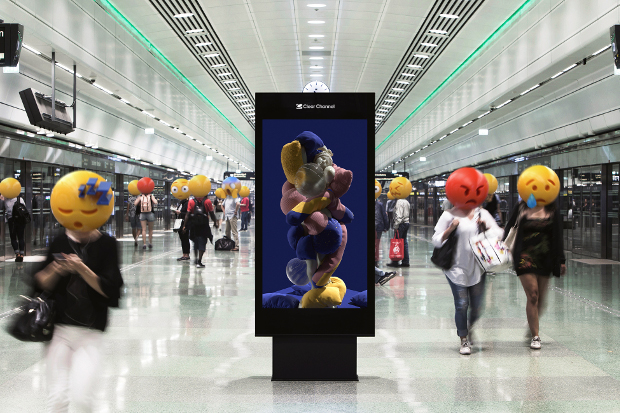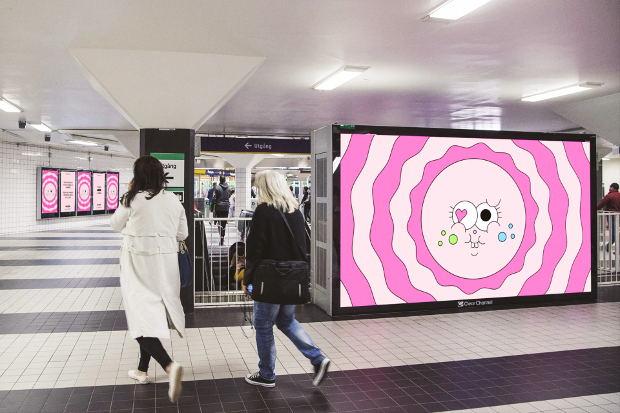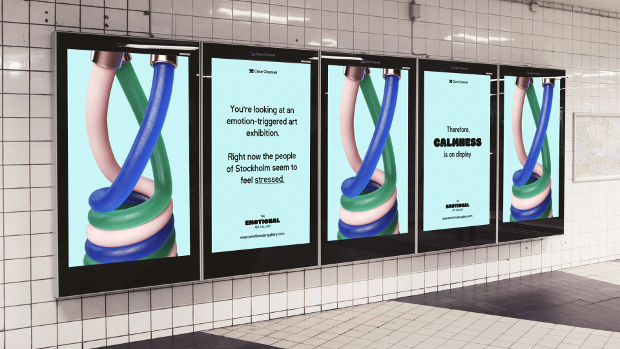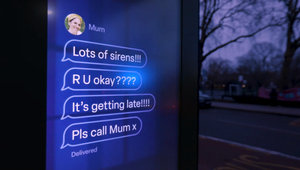
Smart Cities: Beyond Future-Gazing

Technology and data - and in particular digital out of home (DOOH) screens - are redefining the role outdoor advertising can play in building smart and sustainable cities. Local authorities are increasingly looking to out of home (OOH) to help deliver on their ambitions to modernise the way they communicate with their citizens, and to address the growing challenges of rising urban populations.
This opportunity is something we’ve actively embraced at Clear Channel, and we’re constantly exploring new and useful ways to go beyond advertising by adding new functionality to our infrastructure such as WiFi, but also using our panels to support key social initiatives. For example, in Stockholm, Sweden last winter, our digital screens guided the city’s homeless to the nearest emergency shelters when the temperature dropped to freezing conditions.
OOH has a long history of collaborating with cities to provide advertiser-funded solutions, from the humble bus shelter protecting passengers from cold weather, to pioneering the first public bike-sharing scheme in Rennes, France over 20 years ago.
With rapid advancement in internet speeds, an explosion in connected devices, and the increasing expectations of the connected consumer, local authorities are showing an increased interest in leveraging technology to communicate with their citizens. In 10 years, Clear Channel has also gone from having just a handful of digital screens to over 15,000 across the world today. These growing networks of connected screens located in key areas offer the unique ability to reach mass audiences and communicate real-time messages within a matter of seconds.
These transformations have taken the conversation from speculation and future-gazing to one that seeks to join the dots between our existing technology and real-life applications.
With DOOH, cities can share useful real-time information with citizens in a new, flexible and creative way. In Monaco, for instance, we are in the midst of bringing digital technologies and smart city solutions to its streets through the installation of new bus shelters equipped to meet the needs of 21st century travelers. Featuring interactive digital touch screens, they provide citizens with real time information including weather updates, transport schedules, wayfinding maps and even games. They are also equipped with a Wi-Fi hotspot, 4G and a smartphone charger, ensuring citizens can enjoy uninterrupted mobile connectivity on-the-go.

But DOOH is also playing a vital role in helping cities communicate with residents during emergencies. During the 2017 Mexico City earthquake, digital billboards were used to provide emergency numbers and live tweets from the emergency services, and show the locations of nearby refuge stations. Many markets across the world including the UK and Netherlands, broadcast alerts about missing children, and in the US, DOOH is regularly used by the FBI to publicise details of wanted fugitives.
OOH’s role in supporting civic engagement activities will continue to expand in the future. We are helping cities connect with residents to create a more inclusive society, and like advertisers who use OOH to reach mass audiences, our medium can also give city leaders a powerful platform to engage citizens.
In France, for example, we have created ‘Hyperstories’, a partnership with the online native video producer, BRUT, that allows brands and cities to connect with citizens through branded local daily news stories and content. Available across all our digital street furniture, mall and subway networks in France, the stories are also amplified online via a team of micro-influencers– enabling cities (and advertisers) to engage consumers in both the physical and digital worlds. The City of Rennes has already launched its own branded content and it has been positively received by residents.
What’s more, we’re increasingly finding that initiatives like these re-invigorate the streets on which they take place. A theme that fascinates me, and that I’ve explored at length in my book ‘Reinventing the Street Experience’, is the potential for technology like ours to bring the street back to its original purpose - as a place for social interaction.
We’re seeing a strong business case in driving this type of innovation as municipalities look to leverage their existing commercial agreements and enter into more symbiotic partnerships to boost public finances. In 2018, CCI contributed $460M to cities in terms of rent, street furniture and so on.
Cities are also responding to citizens’ desires to be more engaged in civic life. Having a better understanding of what cities expect from us, and showcasing how we can help them answer the demands of residents through innovation, creativity and utility, has helped us secure some major recent wins, like for instance the city of Paris.

Under our new contract, all 1,630 pieces of street furniture that we’re installing will be made of recyclable materials and feature LED lighting with a light dimmer to reduce energy consumption. As our UK team did when they rolled out their digital phone-box product, we’re also planting a tree for every new structure we install in Paris.
We’re fortunate enough to work with some of the most creative agencies and brands in the world, who are constantly coming up with incredible ideas. With the level of technology that’s available to us today, we’re able to make things happen that might have seemed like science-fiction just a few years ago.

Earlier this year our Emotional Art Gallery initiative in the Stockholm Metro saw our digital panels change based on the emotions of residents living in the city, in an effort to help combat stress. The initiative used a bespoke AI algorithm which analysed publicly available data to interpret how commuters were feeling, and then triggered a specific digital piece of art to provide a soothing effect.
It is these moments, when technology and great ideas come together to make a positive difference, that make it so exciting to play such an active role in the evolution of tomorrow’s cities.
Philippe Baudillon is international president smart cities at Clear Channel International (CCI).













